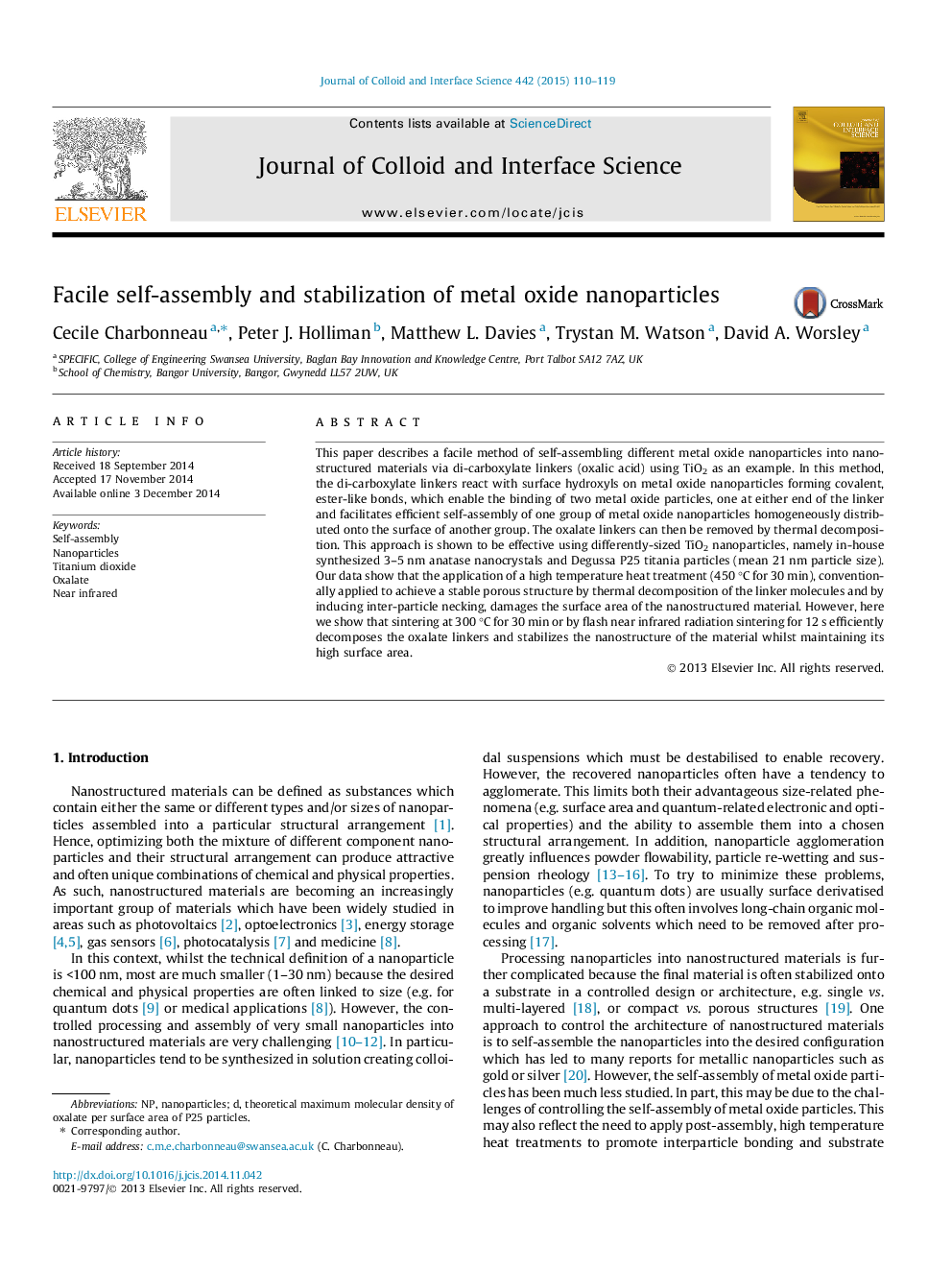| Article ID | Journal | Published Year | Pages | File Type |
|---|---|---|---|---|
| 606848 | Journal of Colloid and Interface Science | 2015 | 10 Pages |
•Self-assembly of two differently sized TiO2 nanoparticle materials is demonstrated.•The carboxylate moieties of oxalate molecules are used as interparticle linkers.•The bimodal TiO2 particle network is stabilized by fast near infrared heating.•A high surface area TiO2 porous material is produced via a simple scalable process.
This paper describes a facile method of self-assembling different metal oxide nanoparticles into nanostructured materials via di-carboxylate linkers (oxalic acid) using TiO2 as an example. In this method, the di-carboxylate linkers react with surface hydroxyls on metal oxide nanoparticles forming covalent, ester-like bonds, which enable the binding of two metal oxide particles, one at either end of the linker and facilitates efficient self-assembly of one group of metal oxide nanoparticles homogeneously distributed onto the surface of another group. The oxalate linkers can then be removed by thermal decomposition. This approach is shown to be effective using differently-sized TiO2 nanoparticles, namely in-house synthesized 3–5 nm anatase nanocrystals and Degussa P25 titania particles (mean 21 nm particle size). Our data show that the application of a high temperature heat treatment (450 °C for 30 min), conventionally applied to achieve a stable porous structure by thermal decomposition of the linker molecules and by inducing inter-particle necking, damages the surface area of the nanostructured material. However, here we show that sintering at 300 °C for 30 min or by flash near infrared radiation sintering for 12 s efficiently decomposes the oxalate linkers and stabilizes the nanostructure of the material whilst maintaining its high surface area.
Graphical abstractFigure optionsDownload full-size imageDownload high-quality image (121 K)Download as PowerPoint slide
